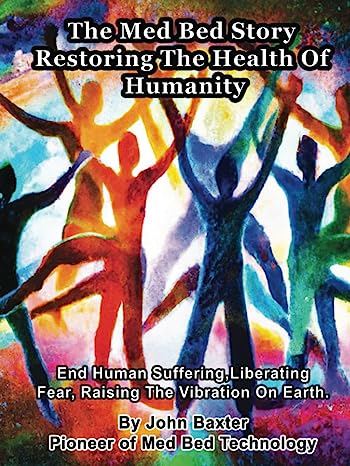Med Beds, often featured in science fiction, are gaining attention as a potential real-world technology that promises revolutionary advances in wellness. This article explores the concept of what is a Med Bed, some technology behind it, its potential applications, and the impact it could have on healthcare.
Understanding Med Beds
Med Beds represent a futuristic technology that combines several advanced fields such as regenerative medicine, nanotechnology, and potentially artificial intelligence to heal and reverse aging, possibly extending human life spans and significantly improving quality of life.
1. Concept and Origin
- Inspiration: The idea of Med Beds is often traced back to sci-fi narratives where miraculous healing technologies cure illnesses instantaneously and regenerate body parts, showcasing the ultimate in medical advancement.
- Current Reality: research and implementation into advanced medical technologies aiming to achieve similar outcomes come in many different variations.
2. Possible Technologies Involved
- Regenerative Medicine: This field focuses on the regeneration or replacement of cells, tissues, or organs to restore or establish normal function, using methods like stem cell therapy and tissue engineering.
- Nanotechnology: The use of nanorobots for medical purposes, such as performing surgeries at the cellular level or delivering drugs directly to cells, is a critical component in turning the Med Bed concept into reality.
- Artificial Intelligence: AI could be integrated to enhance the functionality of Med Beds, providing diagnostics, monitoring, and optimal treatment pathways customized to the individual patient.
Potential Applications
The applications of Med Beds are vast and could revolutionize the healthcare industry if correctly realized:
1. Complete Healing
- Theory: Med Beds could potentially heal all types of diseases, injuries, and physical defects by altering the body’s cells or even re-growing limbs and organs.
- Impact: This would drastically reduce the need for long-term medication, complex surgeries, and could potentially make disabilities obsolete.
2. Anti-Aging and Longevity
- Potential: By repairing damaged cells and tissues at the molecular level, Med Beds could significantly extend the human lifespan and improve the quality of life.
- Significance: This aspect touches on humanity’s long-standing desire for longevity and the prevention of aging.
Challenges and Ethical Considerations
1. Technical Feasibility
- Current Limitations: The technology required to fully realize Med Beds as imagined is still under development, and integrating such complex systems poses significant scientific challenges.
- Progress: Ongoing advancements in regenerative medicine and nanotechnology are slowly paving the way toward making some aspects of Med Beds a reality.
2. Ethical and Social Implications
- Access and Equity: Questions about who would have access to Med Beds and the cost associated with such treatments are of paramount importance.
- Impact on Society: The potential to cure all diseases and possibly extend life indefinitely could have profound effects on population dynamics, resource allocation, and even ethical questions about the natural human lifespan.
Conclusion: The Future of Med Beds
While the full realization of Med Beds as depicted in science fiction is still a long way off, the technologies that could underpin such a development are rapidly evolving. Med Beds represent a convergence of multiple advanced technologies that could one day transform healthcare, making today’s medical miracles tomorrow’s reality. As research continues, the potential for such a technology continues to captivate the imagination and drive innovation in medical science.




